MOUTHS:
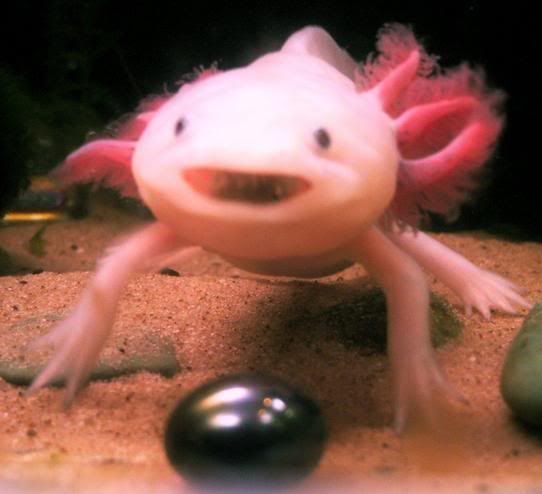
Spyyk has tried to glomp the hematite on many occasions, but fortunately it's far too heavy for suction to pick off the floor, so he's not in any danger. Be careful with normal pebbles - they need to be bigger than your axies head!
As deceptive as this odd "hair-do" is, they are actually gills! Axolotl are Neotenic salamanders. This means they can't produce hormones to turn into full adults, so they stay in their "baby" form, usually for their entire lives; they won't lose those fab fluffy gills when they get older and their body structure remains the same, even though they can still have their own babies.
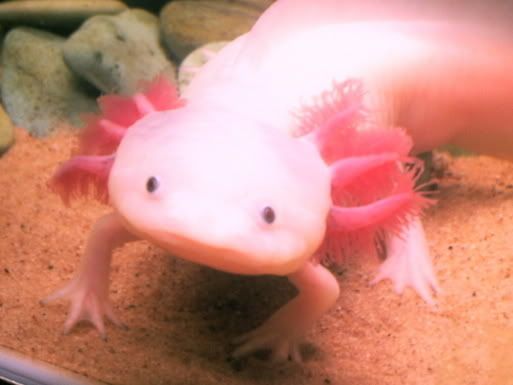

It is incredibly rare for an axie to suddenly metamorphose, unless they're forced to live in terrible conditions or forced to with hormone injections. This is very cruel as not all axolotl can morph, it's extremely painful for them and it halves the length of their lives. Why would you want to???
Axolotl respiration is very unusual in the Caudata (Salamander/Newt) world - as they use FOUR methods to breathe!
The most obvious is their gills - the structures branching out from the sides of their heads (called Rami), trailing the delicate membranes full of tiny capillaries (called Fimbrea).The rami allow water to move around the fine membranes and oxygen can seep directly into the bloodstream and passes CO2 back into the water. The capillaries branch out from the arteries and veins in the main branches - which you can see clearly in Baby Spyyk here.

Shown to a reasonable degree of clarity is one of his gill branches. Note the big blood vessels through the rami - or branch, and how pink with red bloodcells the fimbriae - gill fibres are. Axolotl are lazy fellows, so instead of moving around to get the water to flow through their gills, they'll just move the gills themselves in a flicking motion. Move the stale water, and bring in fresh - perfect!

They also use "cutaneous respiration" - breathing directly through the skin. As salamander skin is so thin and delicate, the gasses can pass through it with ease. The slime coating their skin also helps, by keeping it moist and active - they should NEVER dry out.

The next method is somewhat more complex - Buccal respiration.
The "Buccopharyngeal Membrane" is located near the back of the throat - a flap of thin skin to help absorb oxygen in the same way as the rest of the skin does. The throat pulsates, causing oxygenated water to flow across this membrane, out through the gill slits along the fimbrea, and across his sides - so in fact they're breathing three ways in one - what clever creature!
The "arrow" structure you can just make out in this image is the buccal pouch - your axolotl also uses it at dinnertime as part of it's feeding mechanism - he pushes water out of the mouth, and then suddenly sucking it in again by flaring the buccal pouch down - the change in pressure draws the water in.

And then here comes the really odd bit - this aquatic axolotl has lungs too!
The axolotl by no means relies on it's very basic lung system, as it has all the other forms of respiration, but if the oxygen levels get too low, or indeed, if he or she simply feels like it, they will go to the top and grab a bubble. BLOIP!
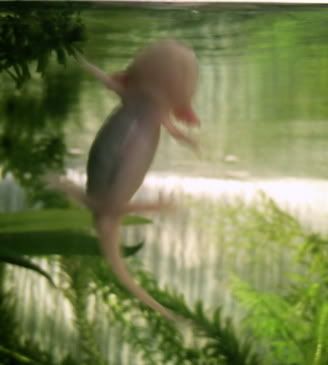
They swallow the bubble, sending it into their lungs. It often means they float around for a little while, but they can burp it up later. I've found that Spyyk enjoys gulping bubbles, as it means he can use perfect buoyancy to bob along in the tank. I've often seen him just drifting in the current, halfway up. I guess it's fun!
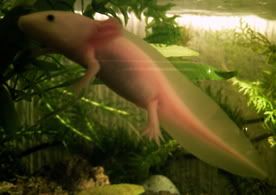
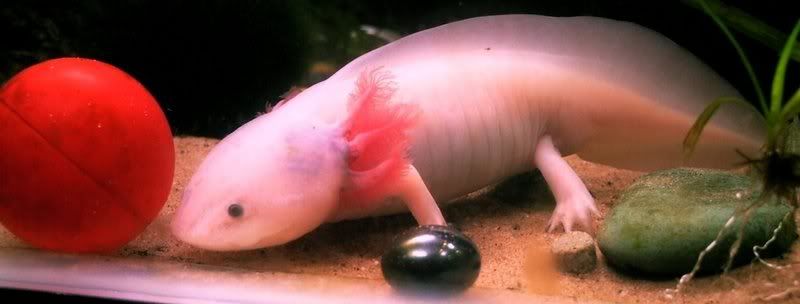
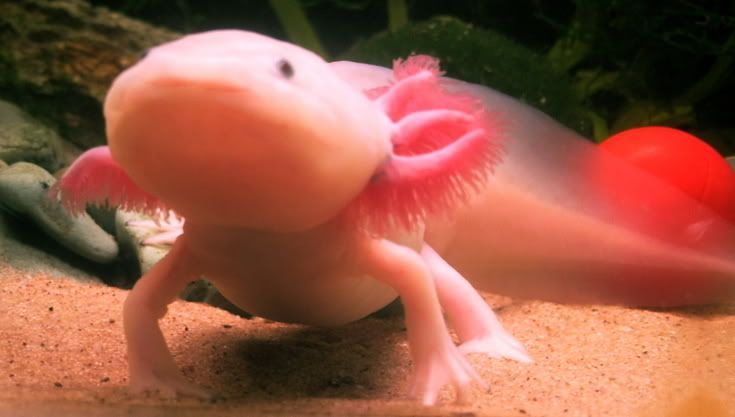
3 comments:
Unlike the other spammers, i am actually going to comment on the article!
Very informative, but easy to understand, well done! This article has actually made me really interested in axolotls now, unfortunatley I'm not allowed one, though.
Spyyk is very cute!
If you wish for to grow your familiarity simply keep
visiting this website and be
updated with the latest news posted here.
Post a Comment